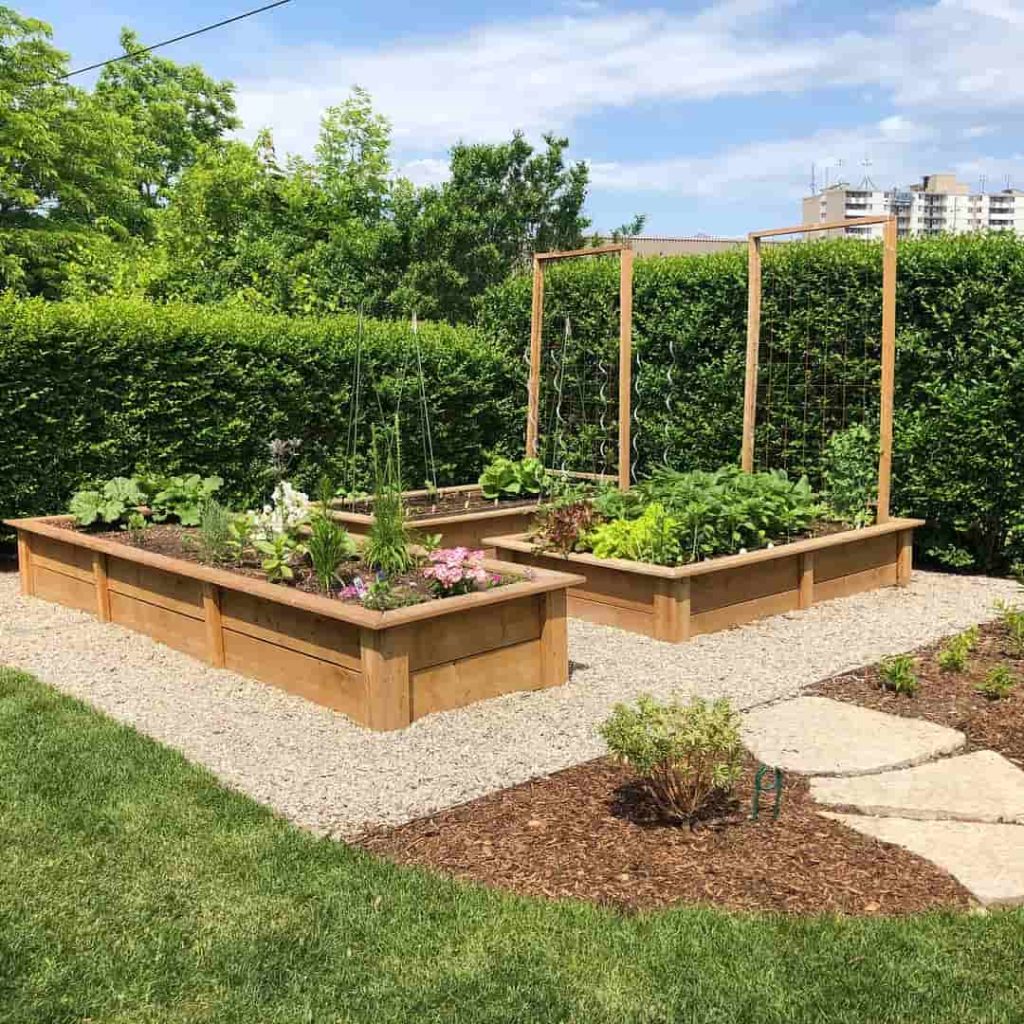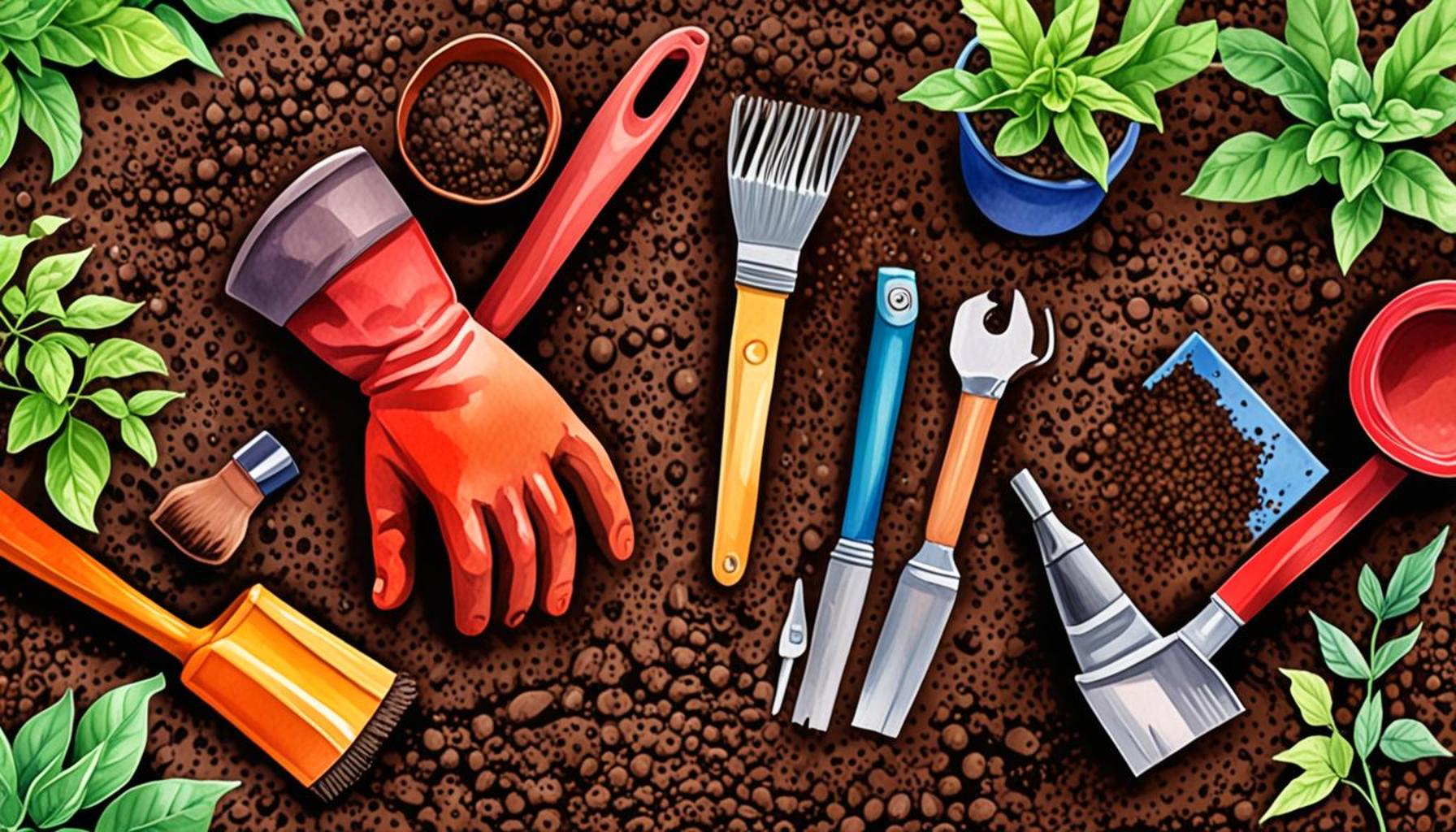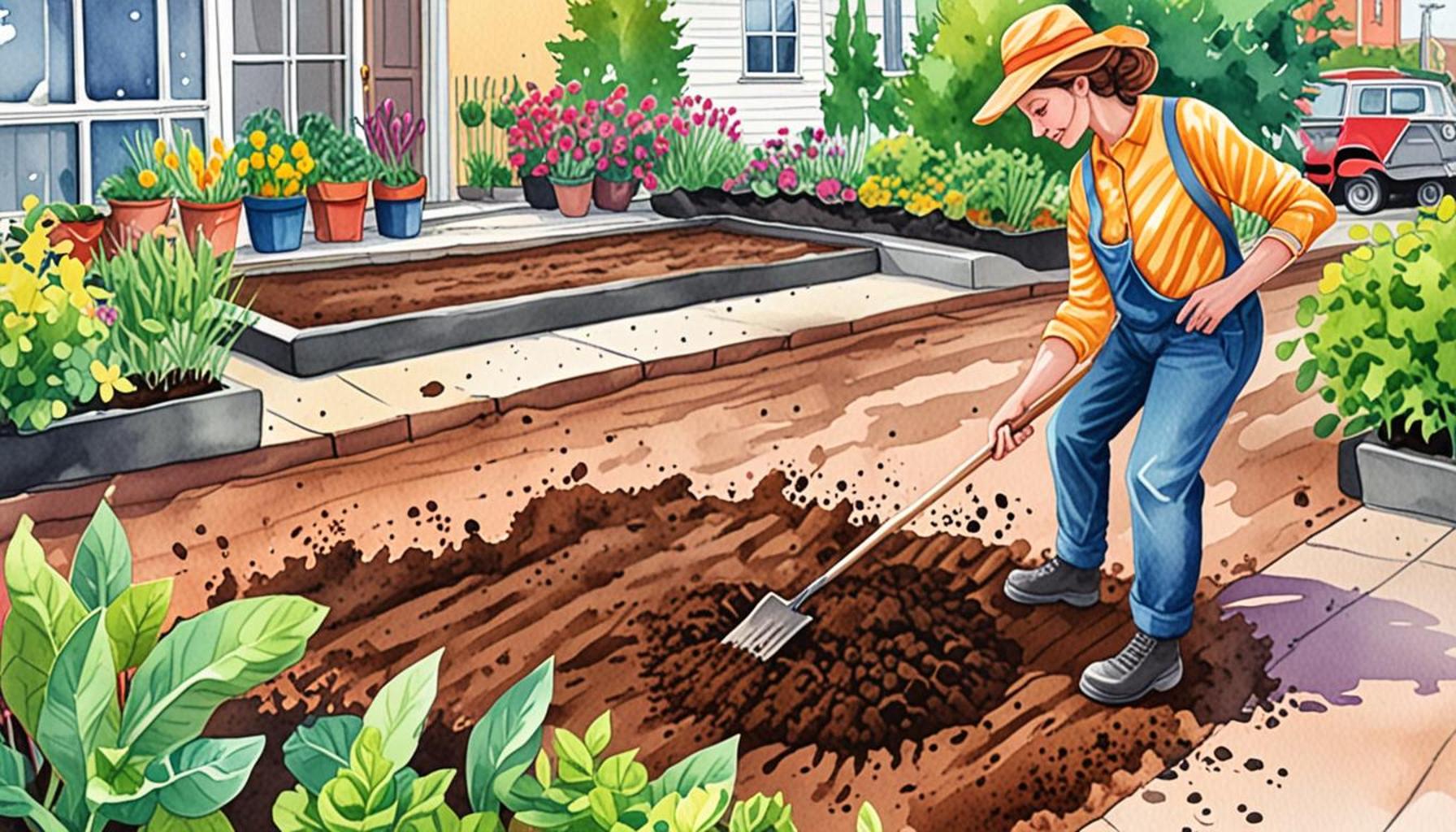Simple Soil Preparation Techniques for Growing a Garden at Home

Unlock the Secrets to Thriving Gardens
Preparing soil for your home garden is a crucial first step that many budding gardeners might overlook. Well-prepared soil not only supports plant growth, but it also enhances the overall health of your garden. Whether you’re planting vegetables, herbs, or flowers, understanding the basics of soil preparation can dramatically improve your gardening success.
Key Elements of Soil Preparation
Soil preparation involves several important techniques that should be considered before planting. Here are some essential steps to get you started:
- Test Your Soil: Before you jump into planting, it’s vital to assess your soil’s pH and nutrient levels. Home testing kits are widely available at garden centers and online. A pH level between 6.0 and 7.0 is generally optimal for most plants. If your soil is too acidic or alkaline, you can make adjustments with products like lime to raise pH or sulfur to lower it. Such tests can reveal nutrient deficiencies, enabling you to add necessary amendments like nitrogen, phosphorus, or potassium to ensure robust plant health.
- Clear the Area: Adequate preparation begins with the physical removal of obstacles that could impede growth. This includes weeds, rocks, and any debris left over from previous planting. Not only do weeds compete for nutrients and water, but they can also harbor pests and diseases detrimental to your plants. A clean garden area sets the groundwork for thriving plants.
- Aerate the Soil: Over time, soil can become compacted, which restricts root expansion and limits water drainage. Aerating the soil—through methods such as using a garden fork to create small holes or employing a mechanical aerator—will improve soil porosity, ensuring that air, water, and nutrients can reach plant roots effectively. This is particularly important in the United States, where heavy clay soils can often present significant challenges.
- Add Organic Matter: One of the most beneficial practices in gardening is the incorporation of organic matter. Adding compost or well-rotted manure enriches the soil with vital nutrients and boosts its structure. Organic matter fosters a rich ecosystem within the soil, enhancing microbial activity, which plays a key role in breaking down materials and unlocking nutrients that plants can utilize.
Understanding these simple techniques enables gardeners to cultivate a thriving garden in their backyards. By investing time in soil preparation, you will not only enhance your gardening skills but also cultivate a lush environment for your plants. As you delve deeper into these strategies, you will discover that soil preparation is not just a chore—it’s the foundation for a vibrant garden oasis. Armed with this knowledge, you may find yourself more invested in your gardening journey, leading you to explore related topics such as crop rotation, companion planting, and innovative watering techniques that can further support your garden’s health and productivity. With the right soil preparation, your efforts in the garden can yield bountiful rewards, turning your outdoor space into a sanctuary of growth and beauty.
DISCOVER MORE: Click here to learn about flowering plants that attract pollinators
Essential Steps for Effective Soil Preparation
Once you’ve grasped the key elements of soil preparation, the next step is to dive into the specific techniques you can employ to create the ideal growing environment for your plants. Let’s explore several practical soil preparation methods that can significantly enhance your garden’s productivity and health.

Choose the Right Soil Type
The foundation of any successful garden lies in the type of soil you choose. Different plants thrive in various soil types; therefore, understanding the characteristics of your soil is crucial. Most home gardens benefit from a soil combination that includes loamy soil, packed with nutrients and organic matter, which aids drainage while retaining moisture. If you find that your native soil is mostly clay or sandy, consider enriching it with amendments that can improve its texture and nutrient content.
Create Raised Garden Beds
For gardeners facing challenges with native soil, building raised garden beds can be a game-changer. These beds allow you to control the soil mixture and drainage more effectively. By constructing raised beds using untreated wood, bricks, or stones, filled with a rich soil mixture of compost, peat moss, and garden soil, you can provide your plants with an optimal growing environment. Additionally, raised beds warm up faster in the spring, allowing for earlier planting and extending the growing season.
Implement Crop Rotation Techniques
Another essential technique for maintaining healthy soil is crop rotation. This practice involves alternating the types of plants grown in specific areas of your garden from season to season. By rotating crops, you can mitigate the risk of soil depletion and pest infestations while promoting beneficial soil microorganisms. For instance, planting legumes such as beans or peas following nitrogen-consuming crops like tomatoes can replenish essential nutrients in the soil.
Mulching for Moisture and Weed Control
- Organic Mulch: Applying a layer of organic mulch around your plants helps retain moisture by preventing evaporation while suppressing weed growth. Materials such as straw, wood chips, or grass clippings not only improve aesthetics but can also decompose over time, adding additional organic matter to the soil.
- Inorganic Mulch: On the other hand, inorganic options like landscape fabric or gravel can create a long-lasting solution for moisture retention and weed control, especially in perennial beds or pathways.
Incorporating these techniques into your soil preparation routine will undoubtedly set the stage for a flourishing home garden. The journey toward growing vibrant plants begins with laying the groundwork through careful soil management, and with each technique you implement, you foster a healthier ecosystem for your plants to thrive. By understanding how to optimize your soil conditions, you will empower yourself to unlock the full potential of your gardening endeavors, paving the way for bountiful harvests and a rewarding outdoor experience.
Soil Preparation Techniques: The Backbone of a Thriving Garden
Soil is often described as the lifeblood of any garden, making its preparation crucial for successful gardening at home. Understanding the nuances of soil preparation can significantly enhance the growth potential of your plants. Simple yet effective techniques can be employed to enrich the soil, ensuring that it provides the necessary nutrients. Here, we explore some essential soil preparation practices.
| Preparation Technique | Benefits |
|---|---|
| Testing Soil pH | Allows you to understand nutrient availability and make necessary amendments. |
| Adding Organic Matter | Improves soil structure and provides essential nutrients for plant growth. |
| Tilling and Aeration | Enhances oxygen flow to roots, supporting healthy plant development. |
| Mulching | Helps retain moisture and suppresses weeds, reducing competition for nutrients. |
Employing these simple soil preparation techniques can transform your backyard into a flourishing garden. Conducting soil pH tests helps identify the specific needs of your garden and ensures your plants are receiving the optimal nutrient balance. Additionally, integrating organic matter, such as compost or well-rotted manure, not only nourishes the soil but also enhances its texture, promoting better drainage and root growth.
Tilling and aeration are also vital, as they break up compacted soil, allowing air and water to penetrate more effectively. Likewise, applying a layer of mulch protects soil from erosion, conserves moisture, and creates a barrier against weeds, making your gardening efforts more efficient.
By focusing on these fundamental techniques, you can create a strong foundation that supports healthy plants and bountiful yields in your home garden.
DISCOVER MORE: Click here to find out about plants that attract pollinators
Advanced Soil Preparation Techniques to Enhance Garden Growth
While the fundamental techniques for soil preparation lay a solid foundation for your garden, delving into more advanced methods can further refine the quality of your soil and, in turn, the produce you grow. Let’s investigate additional techniques that can elevate your gardening game and ensure long-term soil health.
Soil Testing for Nutrient Management
A pivotal step in preparing your soil is conducting a soil test. This assessment reveals the nutrient composition and pH level of your soil, providing insight into what amendments you need to make for optimal growth. Soil testing can be easily done through local agricultural extension offices or DIY kits available at gardening stores. By analyzing these results, you can tailor fertilizers and soil amendments specifically to your garden’s needs, ensuring that your plants receive adequate nutrients, promoting robust health and a bountiful yield.
Incorporating Cover Crops
Another innovative technique is the use of cover crops. These are specialized crops, such as clover or vetch, planted during the off-season or in areas not currently in use. Cover crops offer numerous benefits: they help prevent soil erosion, suppress weeds, and improve soil structure and fertility. By allowing these crops to decompose before you plant your main garden, you can enhance the organic matter content and nutrient availability in your soil, resulting in healthier plants come planting season.
Utilizing Compost for Nutrient Boosting
Composting is a sustainable and highly effective practice for enriching your soil. By recycling kitchen scraps, yard waste, and other organic materials, you create a nutrient-rich natural fertilizer that can be added to your soil. The addition of compost not only improves soil structure—enhancing water retention and aeration—but also adds beneficial microorganisms that foster plant health. Aim for a 2 to 3 inch layer of compost to be incorporated into the top layer of your soil before planting, and consider ongoing applications throughout the growing season to maintain nutrient levels.
Adjusting Soil pH
The pH level of your soil plays a crucial role in nutrient availability for plants. Most garden plants thrive in a slightly acidic to neutral pH, generally between 6.0 and 7.0. However, some plants have specific pH requirements. If your soil test indicates an imbalance, you might need to adjust soil pH using amendments. Lime can be used to raise pH and reduce acidity, while sulfur or organic matter can lower pH if the soil is too alkaline. Such adjustments can empower your plants to access the nutrients they need for optimal growth.
Practicing No-Till Gardening
For those interested in maintaining soil integrity and promoting a diverse ecosystem, adopting a no-till gardening approach can be beneficial. This technique involves limiting disturbance to the soil, which fosters a robust microbial community and preserves beneficial earthworms. By layering organic materials on top of the soil rather than plowing or digging, you can enhance soil structure while simultaneously improving its moisture retention and nutrient cycling.
Integrating these advanced soil preparation techniques into your gardening routine not only increases the productivity of your plants but also supports a healthier, more sustainable gardening environment. As you amplify your soil preparation efforts, you’re not just creating optimal conditions for your plants; you’re also contributing positively to the ecosystem surrounding your garden. Each method you explore enriches your knowledge, enabling you to cultivate a thriving garden right in your backyard.
DIVE DEEPER: Click here to learn about the best techniques for harvesting root vegetables
Conclusion: Embracing Soil Preparation for a Flourishing Home Garden
In nurturing a successful home garden, the foundation lies within the soil itself. Employing simple soil preparation techniques can significantly improve plant health and productivity, making your gardening experience both fruitful and enjoyable. Whether you’re starting small with basic soil amendment methods or venturing into more advanced strategies like cover cropping and no-till gardening, each approach plays a vital role in creating optimal growing conditions.
By understanding the unique composition of your soil through soil testing, you can make informed decisions that cater specifically to the needs of your plants. Additionally, the practice of composting allows you to recycle organic materials effectively, enriching your garden with essential nutrients and promoting a thriving ecosystem. Adjusting soil pH as needed can unlock vital nutrients that might otherwise be unavailable, setting the stage for robust plant growth.
As you embark on your gardening journey, consider that each seed sown not only contributes to your home produce but also to environmental sustainability. Simple soil preparation techniques are not merely steps; they form the groundwork of a fulfilling and sustainable gardening practice. Embrace these methods, and witness how your garden transforms into a lush haven of growth and abundance, reflecting both your efforts and the rich potential of nature beneath your feet. So grab your gardening tools, roll up your sleeves, and dig in – your flourishing garden awaits!



